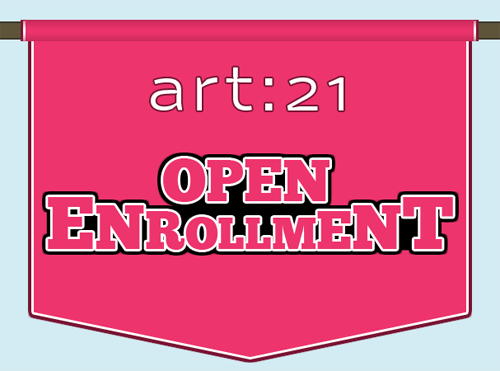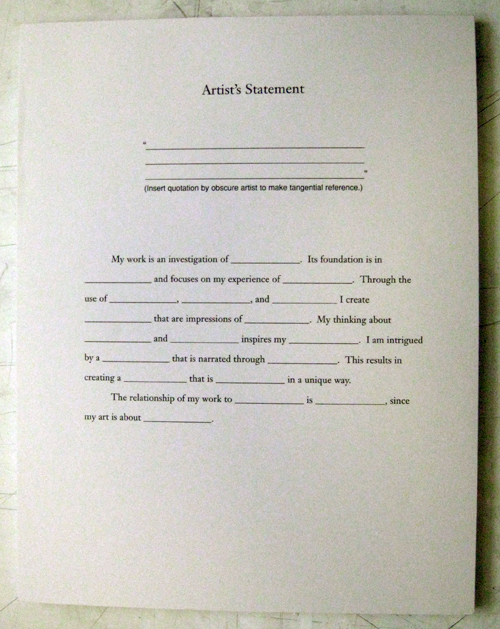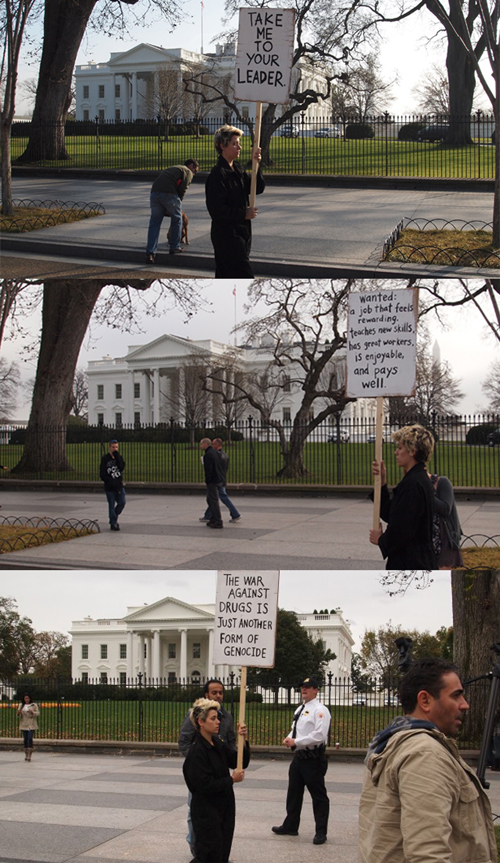There have long been artists like Lawrence Weiner who work with text. And artists such as Emily Squires who transcribes the voices of others. But there seems to be a particular, and maybe revived, interest in how artists themselves write. That is, how do we put our images into words? And after we’ve done that, how do we share what we’ve written?
The artist’s statement is a tricky thing to write. In fact, it is almost as tricky to write as it is to define. One thing is certain though: it is crucial that an art student develop his or her own voice and then maintain it. Although one’s voice develops through making work, I believe that clarity is often found when writing about that work. It has become increasingly obvious to me–especially as I move closer to my graduation date–that it will be the various drafts of my artist statement that help me move forward professionally. I feel this way because often, my writing is the first point of access that people (who I might never meet) have to my ideas and thought processes.
Artists who write tend to fall into a few categories. There are those who think that writing about their own work is pointless, declaring that their art should speak for itself. Then, there are artists that just don’t like to write or have problems with spelling and grammar. And then there are artists who moonlight as art writers (Hello!). Not surprisingly, they all disagree on how best to go about the process of writing.
I am fascinated by artists who write about art, particularly those who can write about their own. My impression of professional artists is that they are prepared; they have various pieces of writing–artistic statements, proposals, letters of intent, bios, and then some–completed, formatted, and backed up on every technological platform they can put up with. Personally, I am far from having all of that ready. My last artist statement contained a reference to the movie Can’t Hardly Wait. Clearly, I need to write more.
How we review, critique, and write about art is so crucial to both artists and the communities around them that it has prompted the Charlotte Arts Journalism Alliance to ask how we can make arts writing more accessible and to more people. What is the most effective media format through which to disseminate our thoughts? And who’s reading it on the other end? Journalist Katherine Balcerek has suggested that by making writing about art more accessible, we will create stronger communities through education, and expose our shared experiences and realities.
Artist statements can end up in a number of different places–in an email or hard copy letter, in a catalog, on Tumblr, and even in an exhibition. Personally, I find value and firm grounding in reading these, and in knowing the historical and contemporary artistic practices surrounding my own work. The writing I do as a result of that knowledge helps me put my visual work into words. It helps me understand my process and put a name to it. It helps me talk about it in public, too. I see the writing (as well as reading) I do as research (and I use that term loosely) on my predecessors and peers. From this, I can determine where and how to situate my work in the wide world of art. Then, I can find my own voice and know how to move forward.







Pingback: Week in Review | Art21 Blog